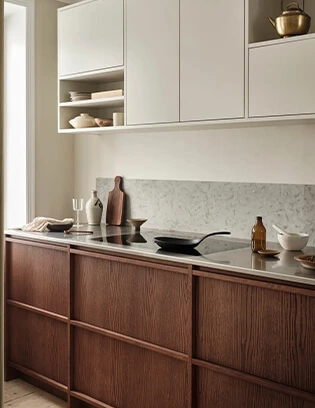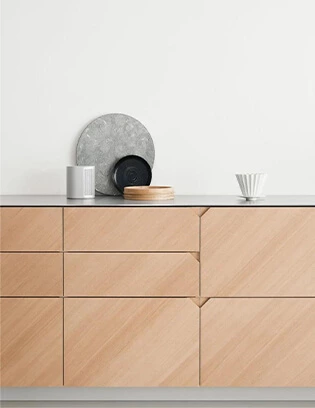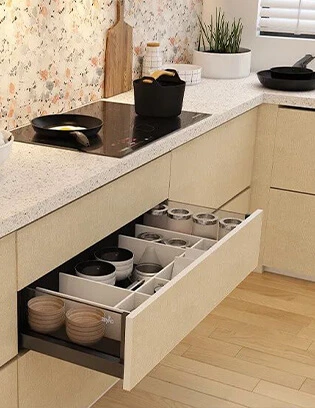A Useful Guide to Furniture Woods
Have you ever bought solid wood furniture? Are you confused by the endless variety of wood names? Do all wood grains look the same to you? Here’s a guide to different types of wood, their characteristics, and tips for distinguishing wood grains.
Hardwood & Softwood
Hardwoods and softwoods are not classified by their hardness but by their botanical categories. Hardwoods come from deciduous angiosperms, while softwoods come from coniferous gymnosperms. Generally, deciduous trees are harder and more resistant to dents. Hardwoods have a coarse texture due to internal vessels, whereas softwoods are smoother and lighter.
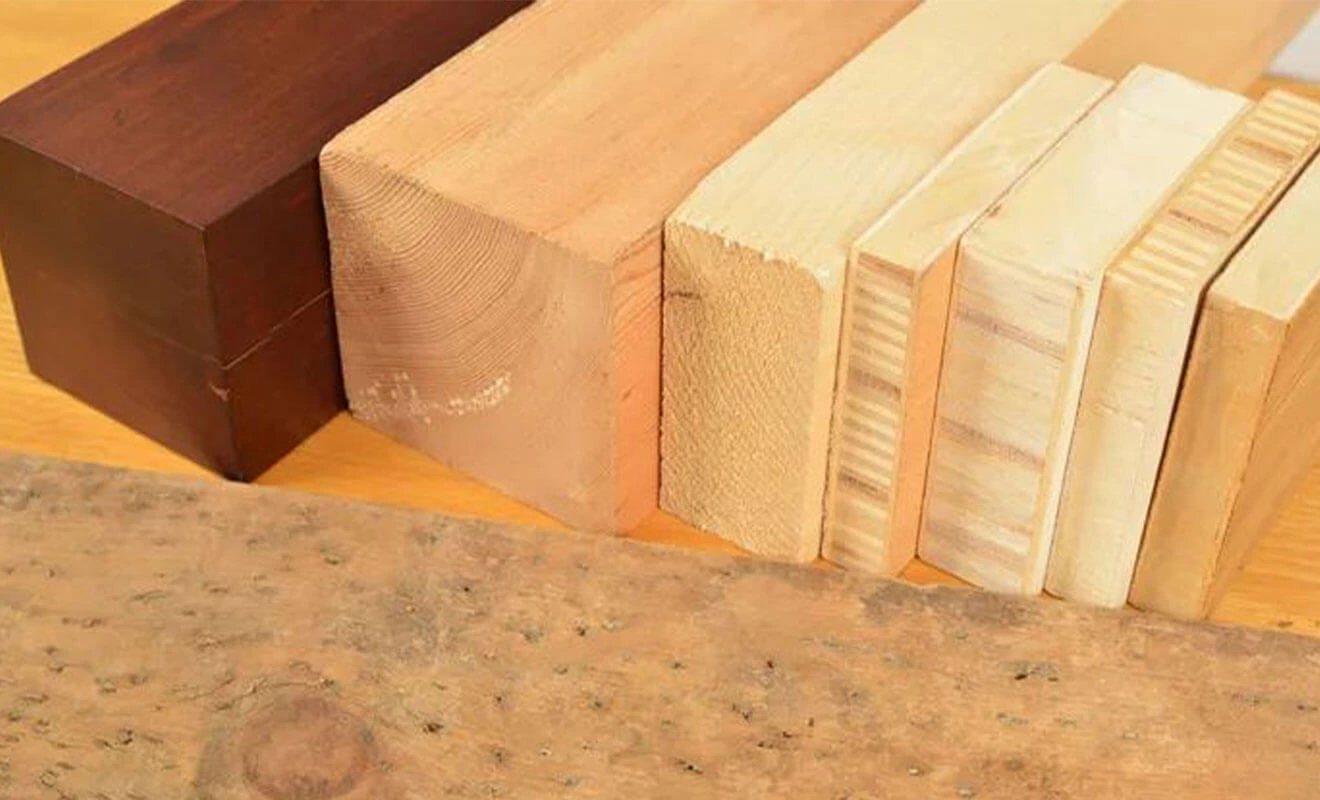
Wood Grain
When wood is cut, the arrangement of pores and fibers inside the wood becomes visible, creating its grain. The grain describes the direction of plant cell growth, the size of the wood cells, and determines the appearance of the wood’s surface.
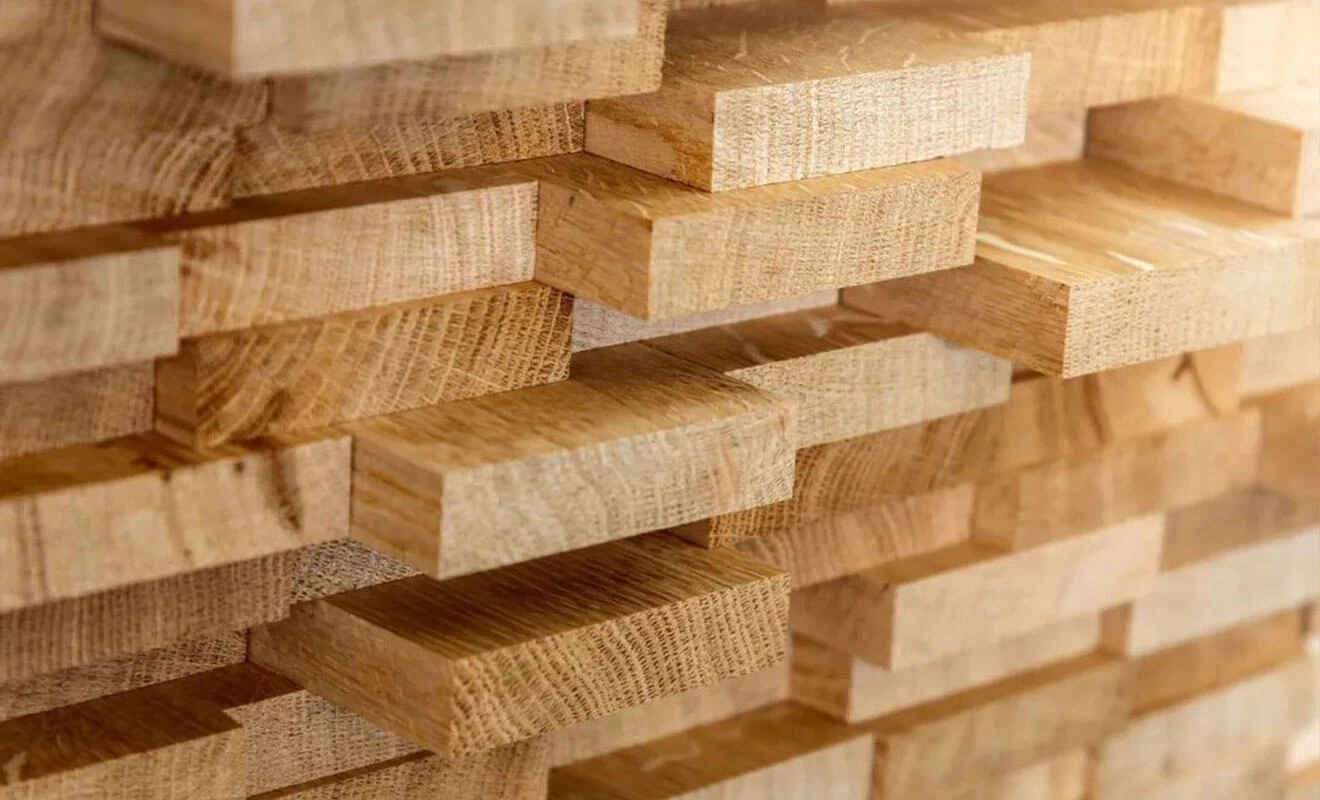
The cutting surface of the wood affects both the pattern on the wood's surface and its performance. Understanding wood grain can help you choose suitable solid wood furniture:
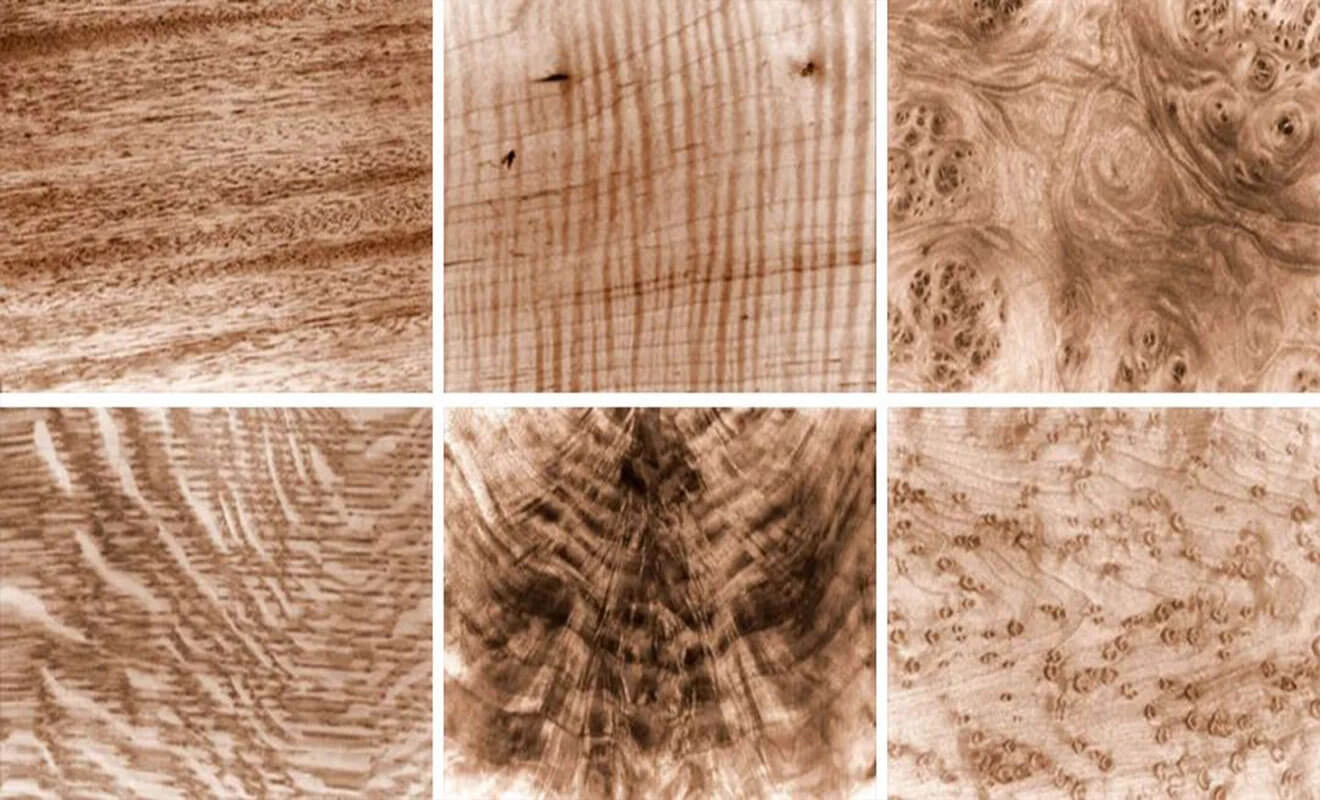
Common Wood Grain Cuts
Vertical Grain & Flat Grain: Vertical grain wood is more durable, less likely to shrink and warp, and holds paint better. It is more expensive but has lower maintenance costs. In contrast, flat grain wood is more prone to warping and deforming in extreme humidity and does not hold paint as well, potentially increasing maintenance costs.
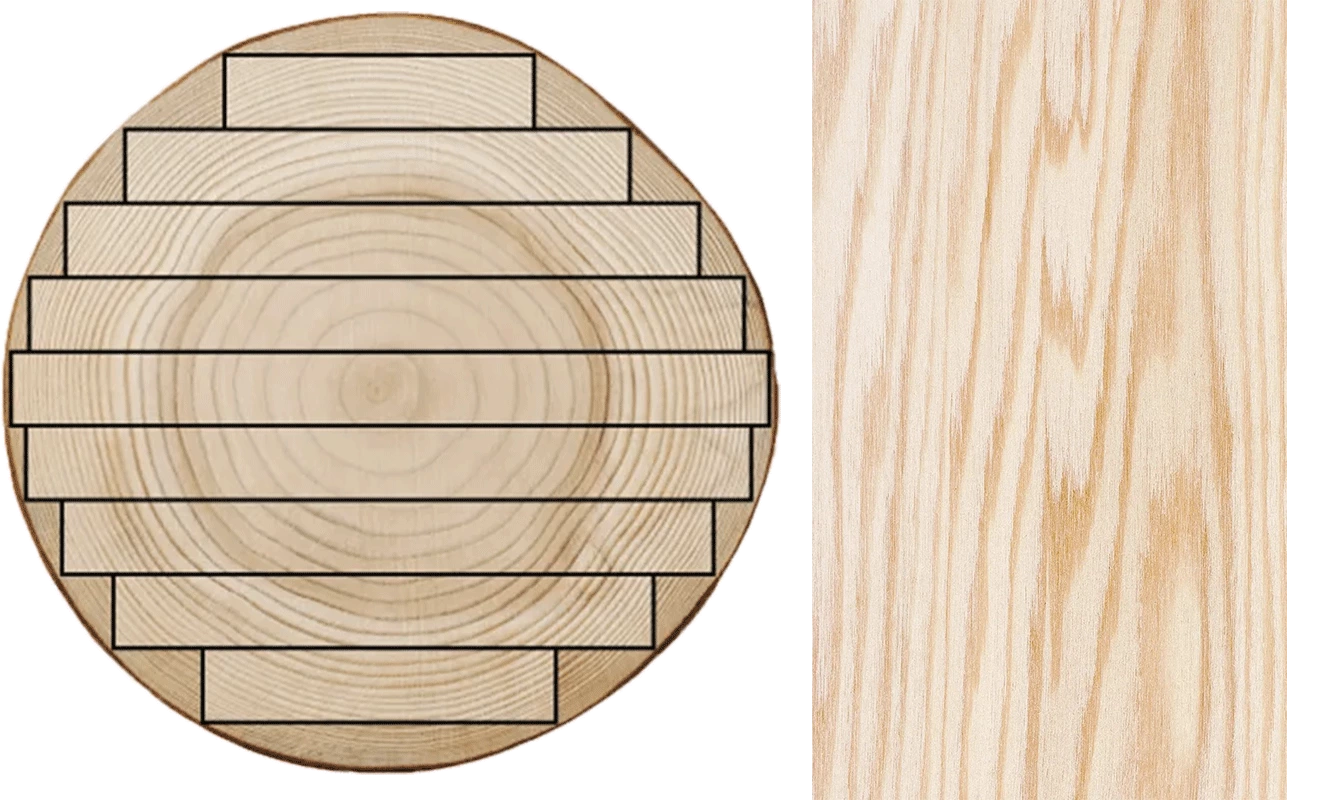
Vertical Grain Cut
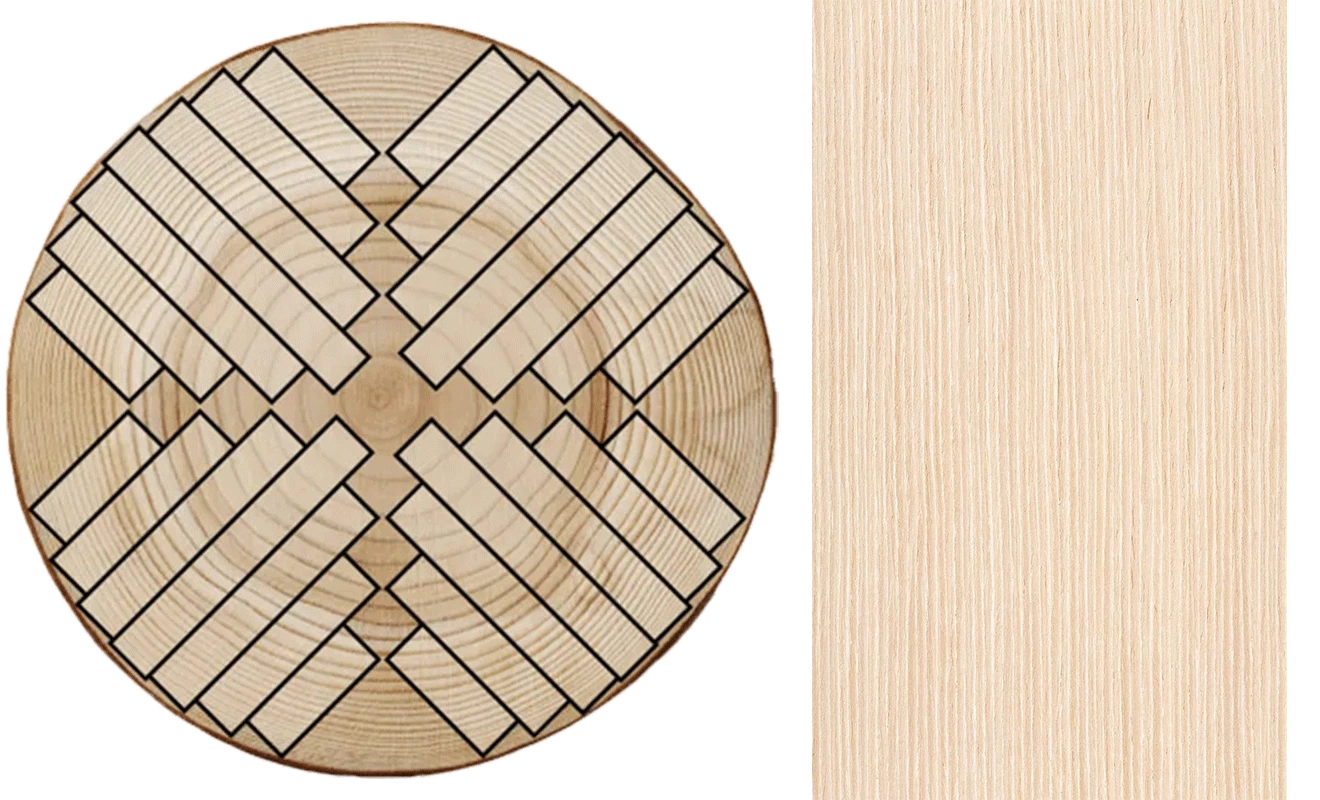
Flat Grain Cut
The beauty of vertical grain comes from its wide, horizontal patterns, while flat grain offers a warm, soft look.
Open Grain & Closed Grain: Open grain wood often features Larger pores, resulting in a rougher texture, while closed grain wood has Smaller pores, resulting in a smoother texture. Thick wood fibers can also create a rough appearance.
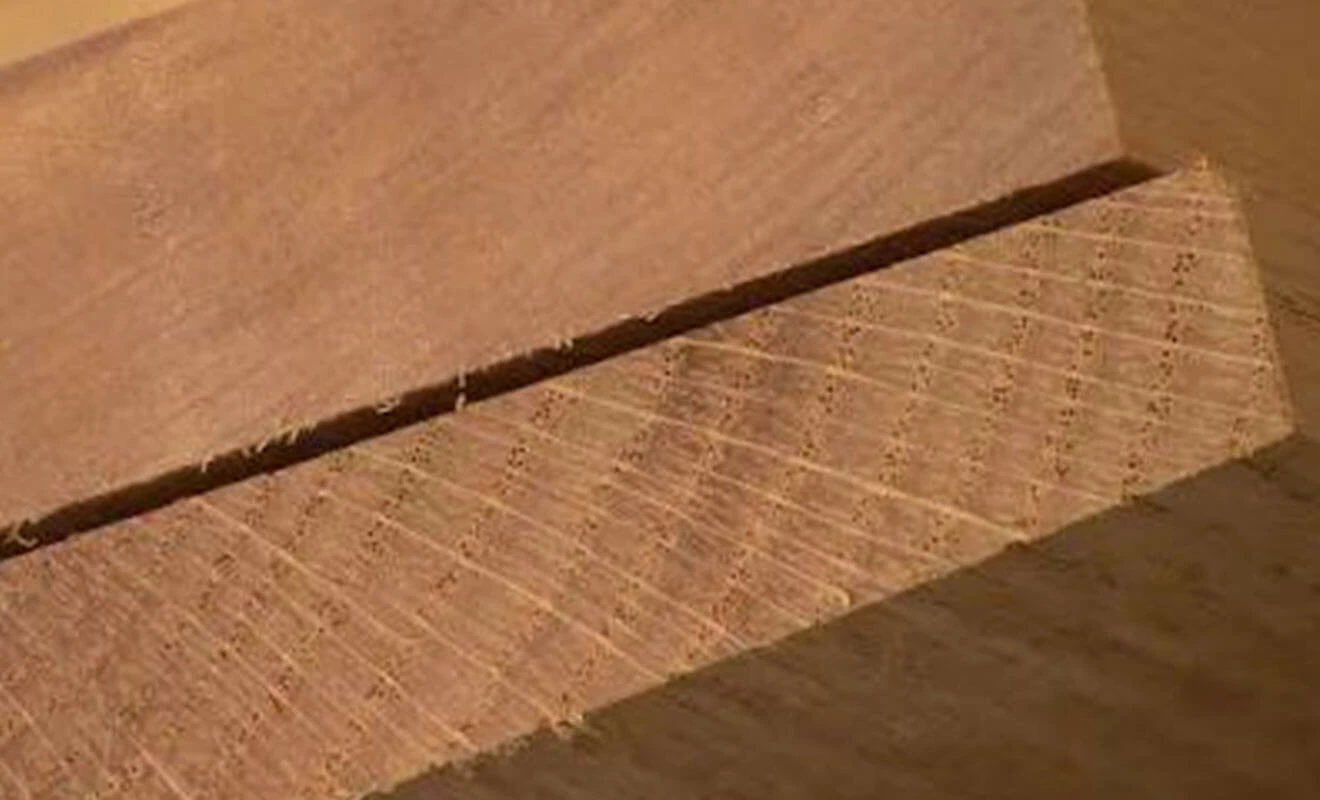
Left: Open Grain Red Oak, Right: Closed Grain Cherry Wood
Tight Grain & Loose Grain: Determined by the width of the tree rings. Narrower rings mean tighter grain.
Common Hardwood Types
Oak: Oak often found in North America and the Malay Peninsula, is a flexible hardwood. There are two types: red oak and white oak.

North American red oak is known for its uniform color, tight grain, and minimal discoloration. It has a reddish-brown hue and wavy grain. White oak has a tiger stripe-like pattern and a yellowish-brown heartwood, often used for high-end furniture and barrels. Note that rubberwood is different from white oak.
Ash: Ash is commonly found in Russia, Europe, and North America. It has straight, slightly pinkish wood. After staining and polishing, it has an attractive rough texture.

Ash's sapwood is yellowish, and the heartwood is light brown, with clear grain. Ash wood is relatively light, making ash furniture lighter compared to other hardwoods like mahogany.
Maple: Found south of the Yangtze River in China, Taiwan, and eastern USA, it comes in hard and soft varieties. It is a subtropical wood with colors ranging from grayish-brown to grayish-red. Maple has numerous evenly distributed vessel pores.

Maple is lightweight, hard, and durable. It holds paint well and has good adhesion, making it ideal for wood veneers.
Beech: Beech, often called elm, is a modest wood choice. It is moderately heavy, sturdy, and impact-resistant. Beech can be steam-bent into various shapes for furniture.

Beech's hardness ranges from medium to high, with a uniformly soft color, making it a preferred wood for doors, flooring, and woodworking.
Cherry:Cherry wood is prized for its rich chestnut color and regular grain. Occasionally, heartwood has spotty indentations with resin pockets from infections and insect damage.

Polished cherry wood has a high gloss and holds varnish well, making it popular for luxury furniture and carvings. Over time, cherry wood darkens, enhancing its beauty.
Walnut:Walnut, available as black or yellow walnut, grows in North America, Europe, and Southeast Asia. Its highly saturated tones give it a high sheen, making it an expensive wood.

Chinese walnut has generally lighter tone, with creamy-white sapwood and dark brown to purple heartwood. Walnut can have straight, wavy, or curly grain, adding decorative appeal.
Birch: Birch ranges from light brown to reddish-brown. Its grain resembles cherry wood, earning it the name "European cherry." Birch furniture is unsuitable for dry environments, as it can crack and warp.

Common Softwood Types
Pine: Pine is a light-yellow, fragrant coniferous wood. Though unremarkable, it is an economical choice for furniture. Dried and sap-extracted pine resists swelling, suitable for various home interiors.

Pine is soft and susceptible to scratches and dents, but its natural grain and warm tones add rustic charm to interiors.
Fir: Fir is a challenging wood to distinguish, often confused with cedar. Cedar includes red cedar, yellow cedar, and aromatic cedar. Fir is relatively inexpensive, while high-quality cedar is more costly. Careful distinction is necessary when purchasing solid wood furniture.

